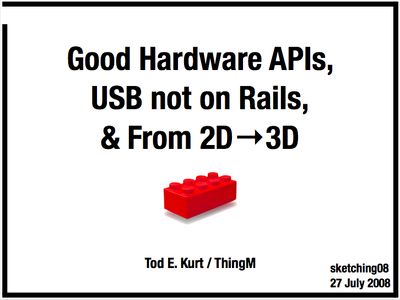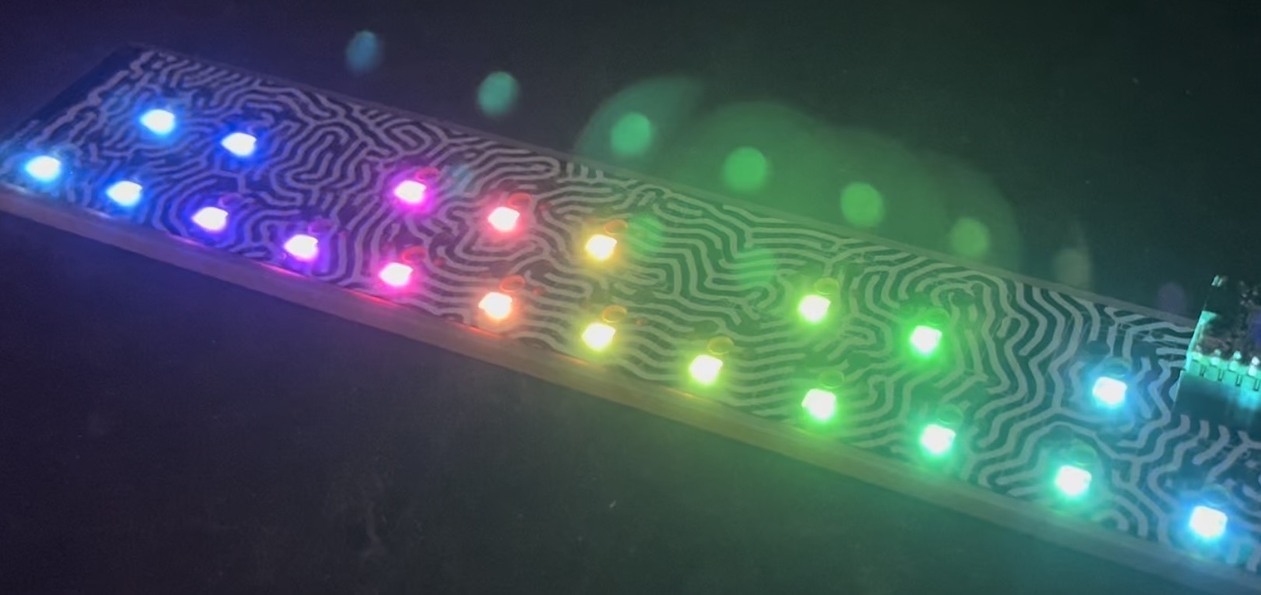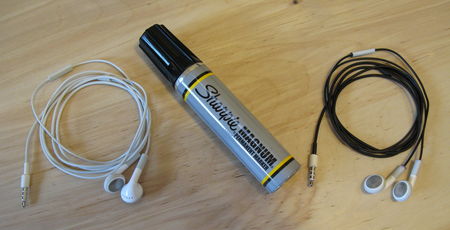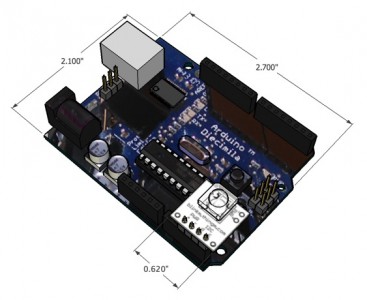Most cars nowadays (especially rentals, which I’ve been in a lot lately) have 1/8″ AUX inputs for an MP3 player. When I had just an iPod, this worked great. Now that I have an iPhone I found my standard 1/8″ to 1/8″ extension cable that I’ve had in my cable go bag wouldn’t work. There’s no way I’m going to spend upwards of $20 on an iPhone adapter cable to get around Apple’s design mistake. Five minutes with the Dremel and I’ve got a handy DIY iPhone adapter cable (and lots of little rubber bits all over the place)
Kennedy 520 machinist toolchest
This is the best toolchest ever, if you do electronics or other small tasks.
Smart garments (I’m on TV! for 3 frames)
My friend Syuzi Pakhchyan had a nice long segment on Make:TV this week. She visited the todbot lab to have the laser cutter cut the designs for the switches in her garment. There’s a 1-second shot where the camera pans over the lab and to the cutter. For about 2 frames, you can see me. Wooho, my Hollywood career has begun.
You can see the post about this episode of Make:TV, or watch it here:
Wiichuck Adapter on TV!

Woohoo, my little Wiichuck adpter for experimenting with the Wii nuchuck made it on TV, thanks to my buddy John Park and Make: TV.
See the Makezine blog post with the segment, or watch it here:
Maker Workshop – Personal Flight Recorder on Make: television from make magazine on Vimeo.
Make a black iPhone/iPod headset
I like the stock iPhone headset. They sound okay as headphones, their mic is pretty good, and setup is much easier than with a Bluetooth headset. Plus they’re pretty cheap at $29. I also liked the stock iPod headphones, for similar reasons. I’m clumsy with headphones and tend to break or lose them. But these stock headsets stand out. The white headphone cables has become part of the Apple marketing message that I’d rather not take part of. So all I want is a black version of the Apple headsets. Since no one sells that, guess I’ll have to make my own. After trying many different substances (PlastiDip, black shoe polish, vinyl dye, & regular MarksALot), the best solution appears to be Sharpie Magnums.
Sketching08 talk: Good Hardware APIs et al
The Sketching in Hardware ’08 conference was held at RISD in Providence, Rhode Island this year. Both RISD and Providence were very welcoming and I think we had a lot of fun. Once again, Mike pulls off an awesome conference.
For my talk, since I didn’t have one big thing I’ve been working on this last year, I decided to shotgun blast a bunch of different topics out there, arranged roughly on the topics:
– Good Hardware APIs – about the evolution of BlinkM’s layout,
– USB not on Rails – an update to a previous Sketching talk of mine, and
– From 2D to 3D – experiments in 3D shapes from 2D lasercutter output
The PDF of my talk with notes:
– sketching08-talk-todekurt.pdf (5.8MB PDF)
And some screencaps of a few of the slides:

Continue reading “Sketching08 talk: Good Hardware APIs et al”
BlinkM & Arduino 3D models
Here’s a really quick 3D model of BlinkM, if anyone needs it. It’s accurate to ~0.1mm.
– blinkm.skp — BlinkM SketchUp model
– rgb_led_piranha.skp — Piranha RGB LED SketchUp model
And here it is plugged into the awesomely done Arduino Diecimila model by Jon-Paul from the Google 3D Warehouse.
SketchUp is pretty great, but I found a problem with it if you’re trying to make accurate to-scale electronic parts: it won’t create surfaces with an area of <1mm. Took me a while to figure that out. The solution is to make a 10x or 100x size version and then do a scale by 0.1 or 0.01 when you’re done.








